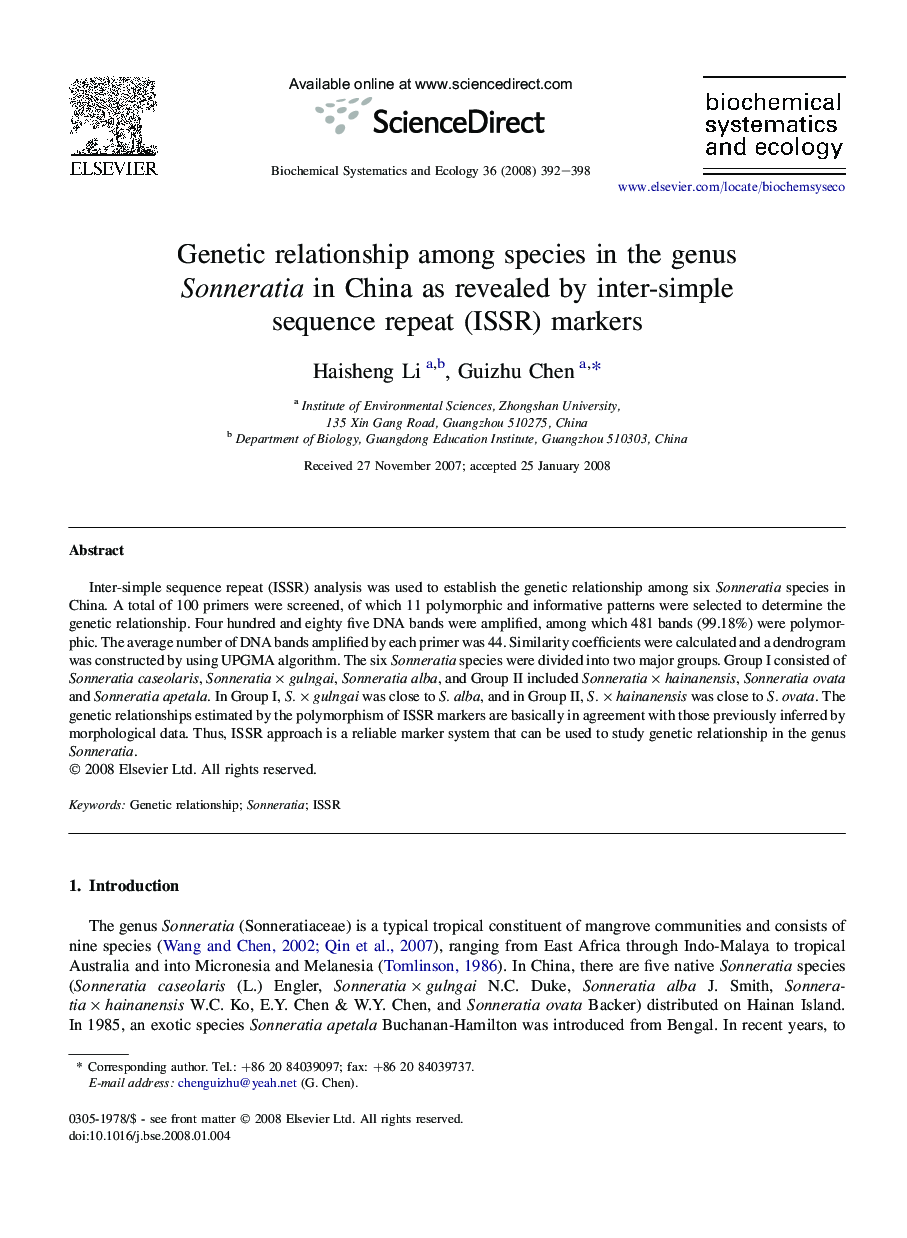| Article ID | Journal | Published Year | Pages | File Type |
|---|---|---|---|---|
| 1354766 | Biochemical Systematics and Ecology | 2008 | 7 Pages |
Inter-simple sequence repeat (ISSR) analysis was used to establish the genetic relationship among six Sonneratia species in China. A total of 100 primers were screened, of which 11 polymorphic and informative patterns were selected to determine the genetic relationship. Four hundred and eighty five DNA bands were amplified, among which 481 bands (99.18%) were polymorphic. The average number of DNA bands amplified by each primer was 44. Similarity coefficients were calculated and a dendrogram was constructed by using UPGMA algorithm. The six Sonneratia species were divided into two major groups. Group I consisted of Sonneratia caseolaris, Sonneratia × gulngai, Sonneratia alba, and Group II included Sonneratia × hainanensis, Sonneratia ovata and Sonneratia apetala. In Group I, S. × gulngai was close to S. alba, and in Group II, S. × hainanensis was close to S. ovata. The genetic relationships estimated by the polymorphism of ISSR markers are basically in agreement with those previously inferred by morphological data. Thus, ISSR approach is a reliable marker system that can be used to study genetic relationship in the genus Sonneratia.
